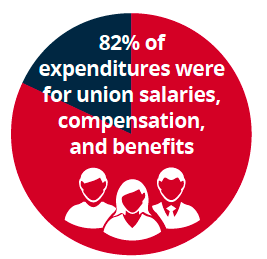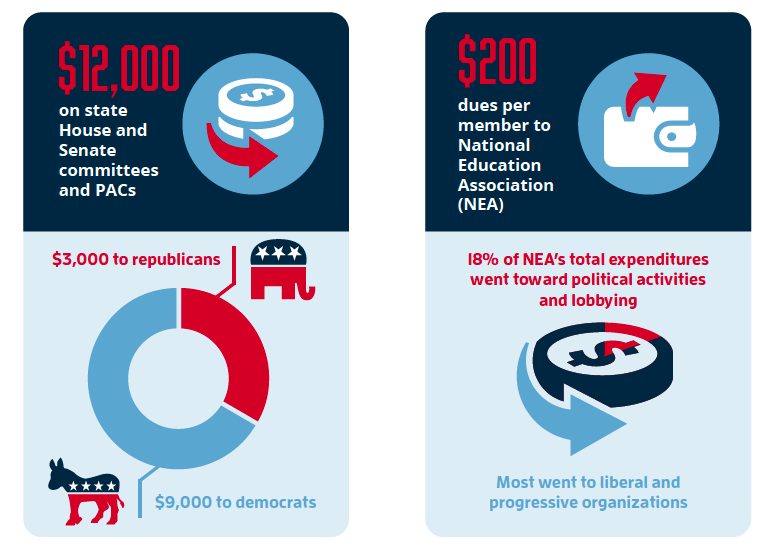The Connecticut Education Association (CEA) represents almost 43,000 educators throughout the Constitution state. Members are required to pay roughly $900 in dues to fund their local union, CEA, and the National Education Association (NEA). However, members’ dues largely fund the union’s pricey overhead, including the union’s own employees, seven of whom make over $300,000 per year.
The union’s 2019 Form 990 (latest available) shows that membership dues account for 89 percent of the union’s revenue, with financial support from the NEA accounting for the remaining 11 percent. In total, the union brought in $20.7 million in 2019.
The Janus v. AFSCME Supreme Court decision relieves nonmembers from the obligation to pay any dues or fees to the union as a condition of public employment. However, for teachers who remain CEA members, Janus changes nothing about how union dues are spent. So, how did the union spend its money?
A closer look at the union’s finances reveals that nearly 82 percent of expenditures went towards the union’s own employee salaries, compensation, and benefits.

The CEA directly employs 81 people, 45 of whom make over $100,000 annually, with the top 12 highest earning making an average of $287,110 in 2019 and seven of them topping $300,000. Attorney Melanie Kolek was the highest earner, bringing in $332,025 in total compensation. Additionally, the union’s “other liabilities,” which likely include pension obligations for its own employees, increased by $10 million during 2019, suggesting that its pension may be in a poor financial state.
Additionally, the union spent lavishly on conferences and travel. When combined, the two categories account for just shy of $570,000 in expenditures. Office supplies were another top expenditure, totaling $607,695.
In 2019, the CEA gave just $215,423 in direct financial support to locals, even though its top service program objective listed on the Form 990 is “to direct staff and financial assistance to local affiliates for organizing collective bargaining, elections, negotiations, and local support services.” The CEA spent 76 times as much money running the union as it did on its “primary objective.”

CEA MEMBERS’ DUES PAY FOR POLITICS
Although not reported on its 990, the CEA’s campaign finance documents reveal that the union’s Political Action Committee (PAC) spent $12,000 on state House and Senate committees and PACs; $9,000 went to Democrats and $3,000 to Republicans.
CEA members also pay approximately $200 in dues to the NEA, which spends heavily on politics. 18 percent of the NEA’s total expenditures went towards political activities and lobbying. Most of these expenditures went to liberal and progressive organizations. For more information on the NEA’s political spending, see “NEA: Where Do Your Union Dues Go?”.
